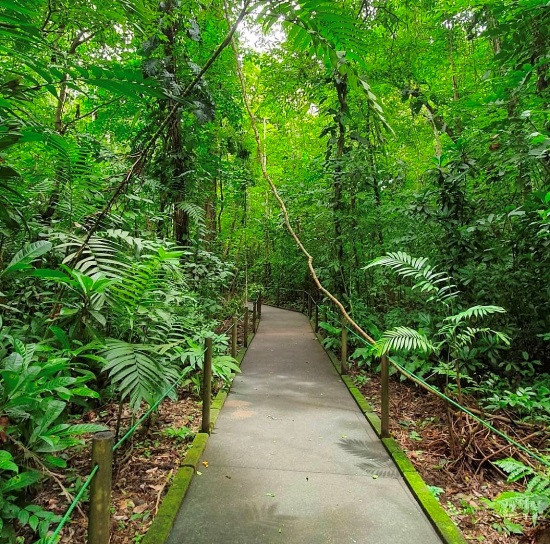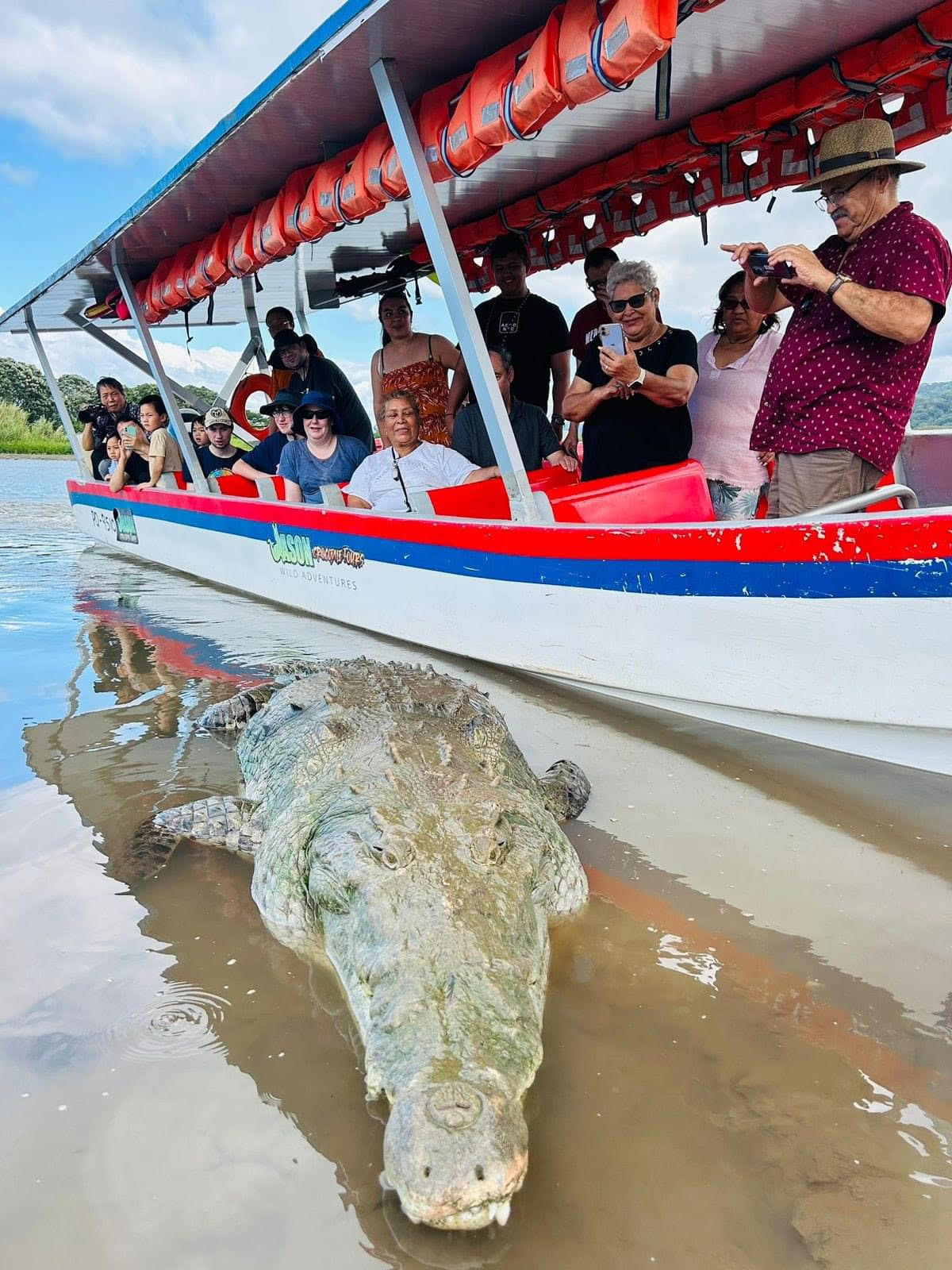Biodiversity in Costa Rica
Biodiversity in Costa Rica is exceptionally rich and diverse, making it a global hotspot for ecological variety. The country's unique combination of geographical features, ranging from coastal areas to cloud forests and volcanic landscapes, contributes to its remarkable biodiversity. Costa Rica's commitment to environmental conservation has resulted in the preservation of many habitats, fostering the flourishing of numerous plant and animal species. Here are some key points highlighting the biodiversity of Costa Rica:
High Species Density: Costa Rica is recognized as one of the most biodiverse countries on Earth. Despite occupying only 0.03% of the planet's landmass, it is estimated to contain nearly 5% of global biodiversity. This extraordinary concentration of species is due to the country's strategic location as a bridge between North and South America, facilitating the mixing of different ecosystems and species.
Flora: Costa Rica's flora is incredibly diverse, with approximately 9,000 known species of vascular plants. The country boasts a vast array of trees, ferns, orchids, bromeliads, and other plant groups. The rainforests, cloud forests, and mangroves harbor a myriad of plant species, creating a lush and vibrant environment.
Fauna: The country's fauna is equally impressive, with an estimated 500,000 species. Costa Rica is home to an astounding variety of bird species, including toucans, scarlet macaws, and the iconic resplendent quetzal. Its mammalian fauna is equally diverse, featuring sloths, monkeys (such as howler monkeys and spider monkeys), jaguars, tapirs, and anteaters. The country's coastal areas teem with marine life, including sea turtles, dolphins, whales, and vibrant fish species.
Insects and Invertebrates: Costa Rica is a haven for insects and invertebrates, with an estimated 250,000 different species. This includes a vast array of butterflies, beetles, ants, bees, and other fascinating creatures. Notable examples include the leaf-cutter ants, known for their impressive colony structures, and the captivating Blue Morpho butterfly.
Amphibians and Reptiles: Costa Rica's amphibian and reptile diversity is remarkable, with around 200 species of amphibians and 225 species of reptiles. The country is famous for its colorful and unique frog species, such as the red-eyed tree frog. It is also home to various snake species, lizards (including iguanas), and turtles (such as the endangered Olive Ridley turtle).
Costa Rica's commitment to conservation is reflected in the establishment of numerous protected areas, covering approximately 25% of the country's landmass. These protected areas include national parks, wildlife refuges, and biological reserves, serving as havens for diverse ecosystems and species. The government's focus on sustainability and eco-tourism has also played a crucial role in preserving the country's biodiversity while offering visitors the opportunity to experience and appreciate its natural wonders.
In summary, Costa Rica's biodiversity is characterized by its high species density, encompassing a wide variety of flora and fauna. The country's remarkable ecological wealth, coupled with its dedication to conservation and sustainable practices, has established Costa Rica as a global leader in biodiversity preservation and eco-tourism.
For more information, send us an email
Crocodile River Excursion
The Tarcoles river has a numerous population of crocodiles. With this tour you will see them from very near, scary near...
You will also have the opportunity to see a variety of birds, iguanas, and enjoy the magic of the big mangrove trees. It's so relaxing that you will be transported to paradise.
Mangrove Monkey Boat Tour
How about having a monkey on your back and your head! Sounds impossible but with us it's a reality. Don't wait, be ready!
Come on board our boats and relax with monkeys. Our professional tour guides will explain it all to you.

San Luis Cloud Forest & Hummingbird garden
The venue is located in the San Luis cloud forest ecosystem that is covered by clouds most of the year. Guided by a naturalist, this adventure takes you to a fascinating and colourful world within the forest. During the tour, we will enjoy various ecosystems that make it more diverse and interesting, such as: secondary forests, forest of transition, riparian forests, mature and primary forest.
Since much of these ecosystems are unknown to science, they serve as a natural lab to carry out studies about birds, plants, butterflies and amphibians. The imposing vistas seen from the bridges over the forest include a showcase of the aerial gardens formed up by orchids and flora.The walk through the hanging bridges, is followed by a visit to the butterfly and hummingbird gardens, full of iconic and beautiful species like the blue morpho butterfly (Morpho Peleides)

Manuel Antonio national park
The park is celebrated for its incredible biodiversity and abundant wildlife. Within its borders, you can find a diverse range of ecosystems, including primary rainforest, mangroves, and pristine beaches. This variety of habitats supports a vast array of wildlife species, such as monkeys, sloths, iguanas, toucans, and a wide variety of bird species. It's a paradise for birdwatching and wildlife enthusiasts.
The park offers a network of well-maintained trails that wind through the forest, allowing visitors to explore the natural wonders at their own pace. The trails lead to breathtaking viewpoints, offering panoramic vistas of the Pacific Ocean, surrounding islands, and dense rainforest. You may even spot some monkeys swinging through the trees or sloths lazily hanging from branches.
One of the highlights of Manuel Antonio National Park is its stunning beaches. The park boasts four pristine beaches with crystal-clear turquoise waters and powdery white sand. Playa Manuel Antonio is the most popular and accessible beach, perfect for swimming, sunbathing, and picnicking. The other beaches, such as Espadilla Sur, Playita, and Escondido, offer a more secluded and tranquil atmosphere.
It's important to note that Manuel Antonio National Park is a protected area, and certain regulations are in place to preserve its natural beauty. The park has limited daily visitor quotas, so it's advisable to arrive early to secure entry. Hiring a local guide is also recommended, as they can provide valuable insights into the park's flora, fauna, and conservation efforts.

Carara National park
Carara National Park is located in the Central Pacific Conservation Area of Costa Rica, near the Pacific coast. It is situated between the provinces of San José and Puntarenas, making it easily accessible from major cities like San José and Jacó.
The park is renowned for its lush tropical rainforest and serves as a transition zone between the dry forests of the northwest and the humid forests of the southwest. It is particularly known for its diverse bird population, including the endangered scarlet macaw, making it a popular spot for birdwatching enthusiasts.
When visiting Carara National Park, you can explore its well-maintained trails that wind through the forest, providing opportunities for wildlife spotting and enjoying the natural beauty. Keep an eye out for monkeys, sloths, anteaters, and a variety of reptiles and amphibians that inhabit the park.

Arenal Volcano
The Arenal Volcano is located in the Arenal Volcano National Park, located in the province of Alajuela, approximately 90 kilometers northwest of the city of San José. For many years, the Arenal Volcano was one of the most active volcanoes in Costa Rica, but its last major eruption occurred in 2010 and it has been in a state of relative inactivity ever since.
However, that does not detract from the beauty and attractiveness of the Arenal Volcano and its surroundings. The surrounding region offers a wide range of activities and breathtaking scenery. You can enjoy hiking through the trails of the park and appreciate the tropical flora and fauna. There are several viewpoints from where you can get panoramic views of the volcano and Lake Arenal, which is located nearby.
In addition, the Arenal Volcano area is famous for its hot springs, fed by past volcanic activities. There are numerous resorts and spas that offer thermal pools where you can relax and enjoy the healing properties of the hot mineral waters.

Poás Volcano
The Poás Volcano National Park is located about 30 kilometers northwest of the city of Alajuela, and approximately 70 kilometers from the capital, San José. It is one of the most active volcanoes in Costa Rica and has one of the largest craters in the world, with a diameter of almost 1.5 kilometers and a depth of more than 300 meters.
The Poás volcano is located at an altitude of approximately 2,700 meters above sea level, so the temperature can be quite cool, especially in the morning and during the rainy season. The landscape around the volcano is full of vegetation and cloud forests, creating a picturesque and beautiful environment.
The national park offers well-marked trails that allow visitors to explore the surrounding area and enjoy the natural beauty. One of the highlights of the visit is the viewpoint of the main crater, from where you can see the fumarole and, on clear days, appreciate the beautiful lake of acid water that has formed inside.












